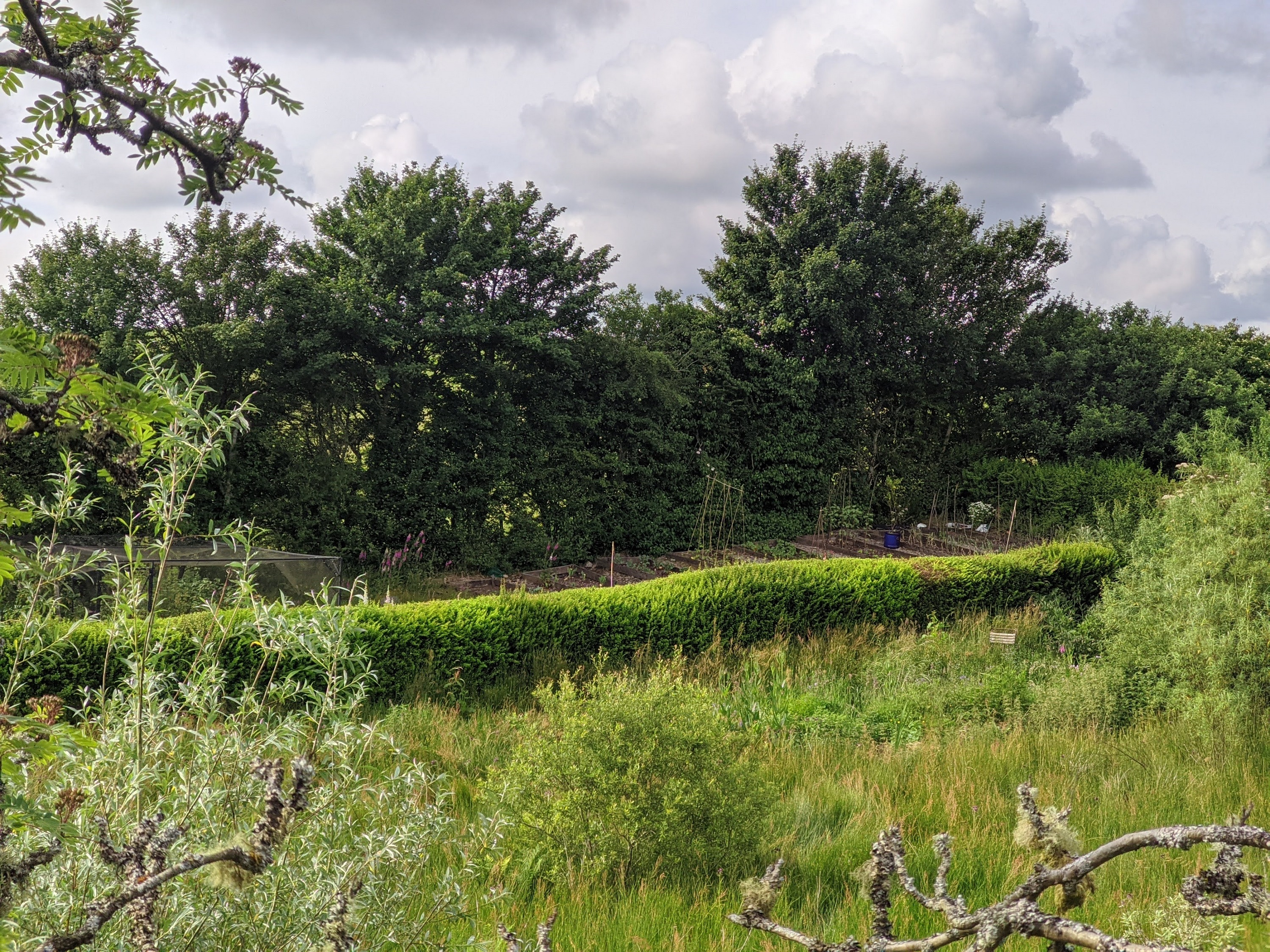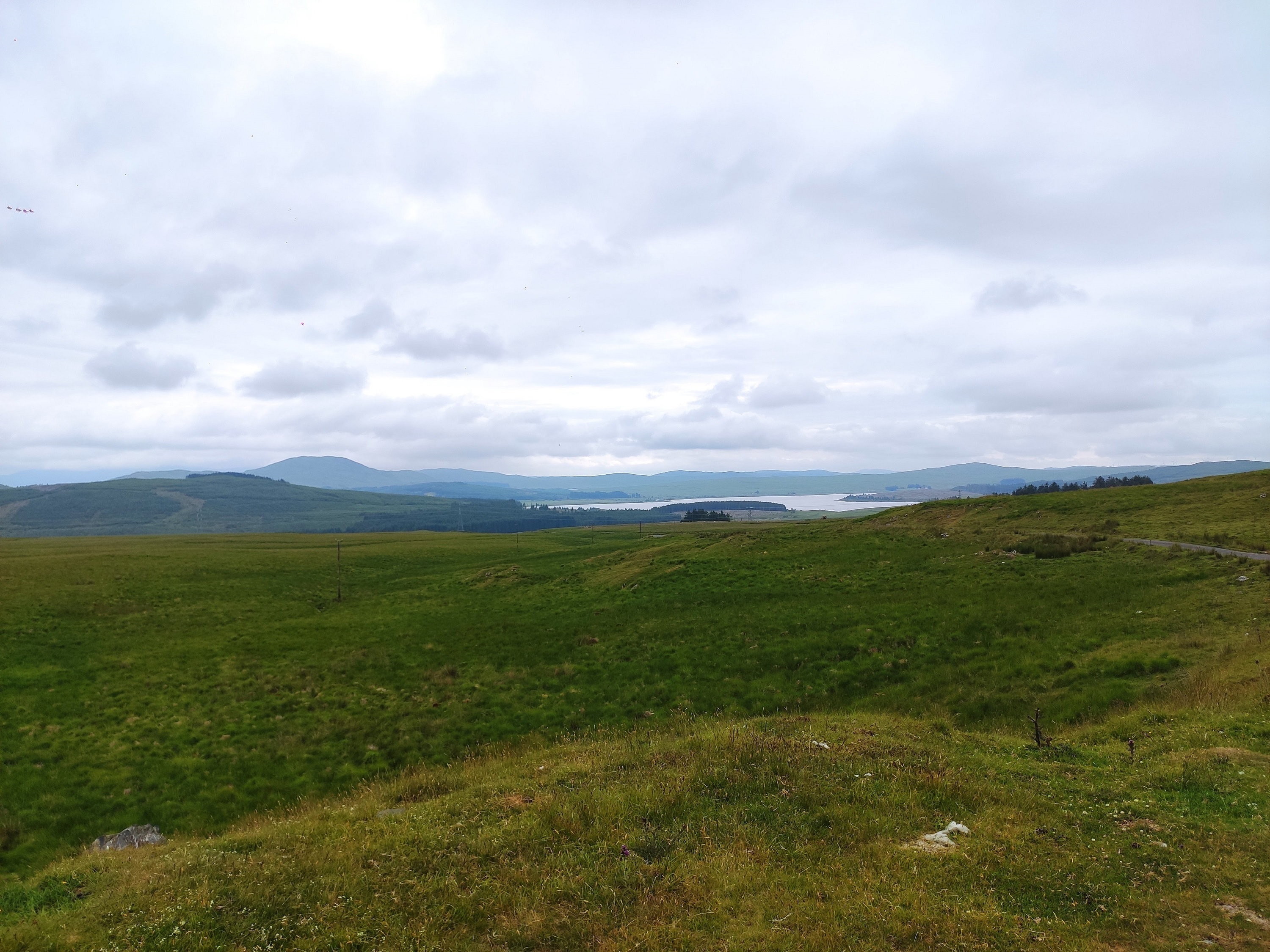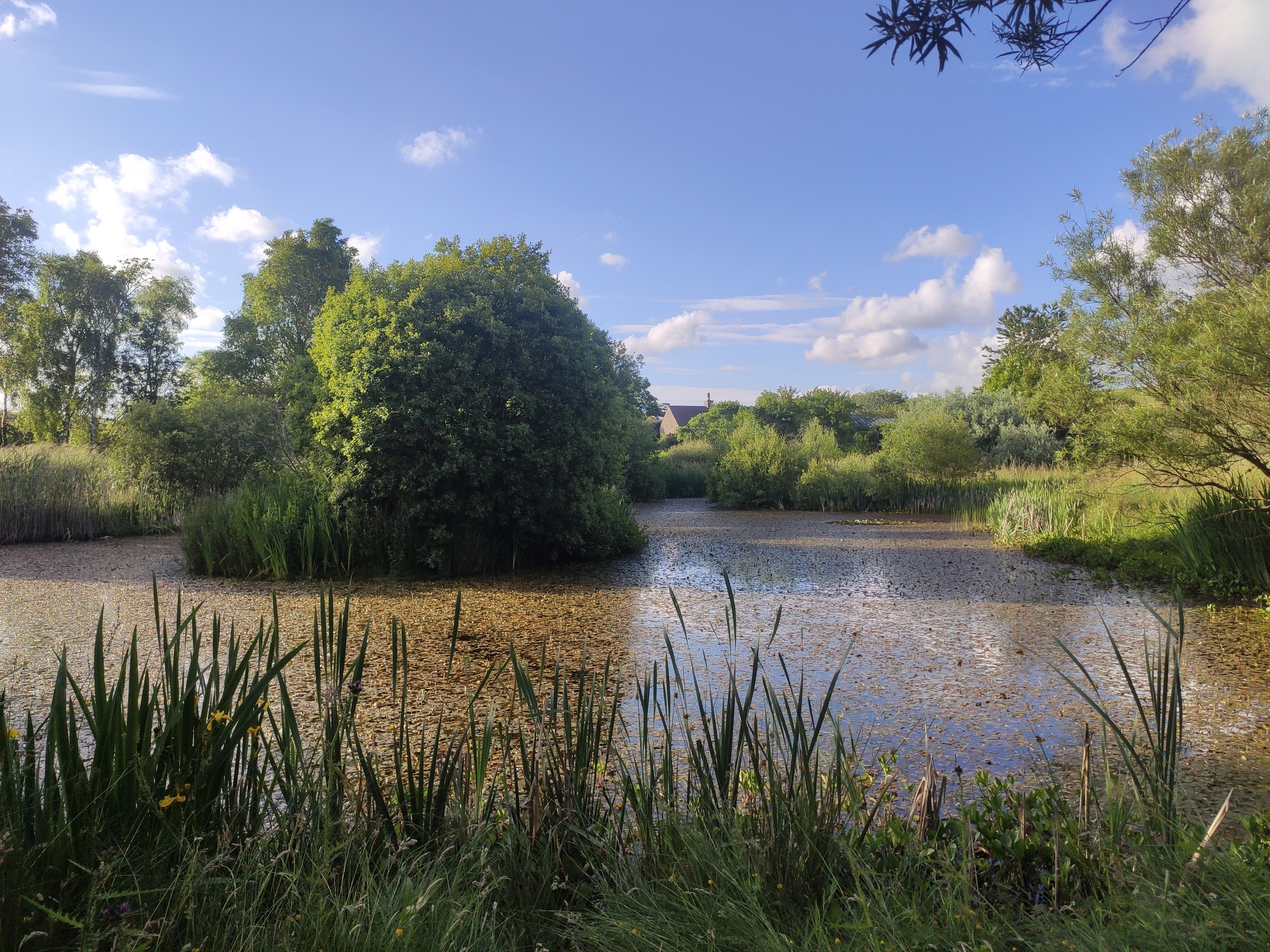We have all struggled to make human connection at some stage during the past year. Be it the struggling Wifi as we videocall our loved ones, or the strange feeling of guilt we have when we remember to write to someone, but for some reason can’t bring ourselves to do so. Humans are undeniably social creatures. Since we evolved to walk on our hind legs, social bonds, and the ability to make friends and allies has been crucial to our survival as a species. Recently, I am beginning to realise not only the importance of social connection in my own personal development, but also that it is impossible to disconnect people from the places they inhabit. As a passionate traveller, I may claim to be ‘chasing wilderness’: forever in search of the next new landscape, the next retreat from civilisation. But I would be wrong to underestimate the importance of social connection which comes hand in hand with the experience of travelling.
During the month of July, I pursued a Workaway placement in Dumfries and Galloway, tucked away in a little Oasis of biodiversity amidst endless sheep fields. Whilst on this placement, I worked in the garden and became intimately acquainted with the flora and fauna endemic to the region (as well as many invasive species, such as the crayfish which thrive unstoppably in the small rivers and streams running into Loch Ken). Working in the garden opened my eyes to the ingenuity and determination with which life, in all its forms, has survived over the past several million years. But it was not merely the wildness of the natural landscape, and the complex biodiversity of the garden which fascinated me during this trip, it was also the people I met, and how they interacted with the landscape.
It was Leila who first welcomed me to the Oasis – the name I have chosen to give to my host’s plot of land, for reasons which shall become evident – with a mug of tea on the decking, and the customary tour around the garden. I did not meet Robin until the second day, when he arrived back from his fatherly duties collecting his youngest from her first year at Oxford University. Whilst at the Oasis, I stayed in a little marsh cabin, built from raw timber, and insulated with clay: the traditional way. The cabin stood on three rows of five giant alder posts, which I learned were chosen for their durability against moisture.
Later during my stay, the durability of this miraculous wood was proven by the stubborn refusal of two stumps to subside to their new life as a pillar: they began to sprout. This was perhaps the first, and the most inspiring of my revelations about the power of nature and its determination not to be confined to the restrictions of human design. Alder is a fascinating tree, one that grows best with its roots soaked in water – be it slipping off the edge of a riverbank, or slowly sinking into a Scottish bog. Like willow, it is one of those trees that can happily survive as a cutting: trim one small branch off the larger tree, stick it deep in the soil, and it will sprout roots as happily as any young sapling. To prevent this inexorable growth, it is recommended to strip the bark off alder before it is used for the purpose of construction. Will, the man who made my marsh cabin, a wonderfully cheerful and contented Scot in his early thirties with an incredible talent for wood-based architecture, had missed a couple of strips of bark on these particular posts. The first one to sprout, had a line of bark no wider than the width of my hand, or perhaps around one eighth of the post’s circumference, running from the top of the post down to where it disappeared into the thick peat of the marsh. Nevertheless, a small green stem gradually began to protrude from this small section of bark. By the time I had left, it had grown from a simple green stub into the beginnings of a new branch, with several broad green leaves ushering in energy from the sun to fuel its growth. It amazed me to see this post – which I had presumed to be long dead and buried – sprouting again as if nothing had happened. It amused me to think of the little marsh cabin slowly turning into a treehouse.
***
The couple had only been living in the Oasis for a few years, but in that time, they had cultivated the garden towards their own needs, and begun the transition of the vegetable beds from barren soil heavily reliant on chemical fertilisers, to an organic approach based on what Leila termed the ‘no-dig method’. One of the first jobs we undertook was the expansion of the compost enclosure, which would be vital to ensure a healthy soil quality for next year’s growing season. My first week brought a gentle introduction to the garden, its principles, its design, its wilderness, its strengths and its weaknesses. Not only this, but it gave me an introduction to the hosts of the garden. Both successful writers in their own fields, I felt privileged to gain insight into the lives of two such well-travelled and experienced people. Through the casual anecdotes told over mugs of tea on the decking, over buckets of weeds in the veg beds, over wheelbarrows of grass cuttings, I glimpsed a little of their lives, who they were, how they had lived, and what had brought them to this Oasis.

I was lucky enough to meet Caroline, the Workawayer who had stayed at the Oasis before me. A Belgian, she had been staying in the UK for several months until her allotted time was cut short by the new Brexit regulations, meaning she had to return home shortly. We shared stories of travel and work, and compared our experiences of the Scottish landscape. It was refreshing to feel that I had become part of a diverse traveller-worker community through my stay here. Just up the road at the Hidden Mill I was met with a collection of people from various backgrounds, including professional gardeners, a world-renowned percussionist, a physics teacher, several carpenters, mechanics and drifters with whom I felt very much at home. Natalia, a Spanish girl in her mid-twenties, comforted me with her infectious contentedness, and reassured me that she had few plans, but was happy going where her instincts took her. Ulle, the Finnish mechanic, warmed me with his unquestioning friendship, as he buzzed around the mill, feet and chest bare, working his genius on an eclectic mix of ramshackle vehicles.
I began to view the community in and around the Oasis much like the garden itself, and the people, much like the plants. The garden was a brilliant explosion of diversity amidst the sheep fields, with native species flourishing alongside new and introduced cultivars. Did the plants have any idea how they had ended up there? Did it matter? What mattered was that they were thriving in this little Oasis, tucked away amidst the drumlins, hidden out of sight of the nearest road.
Forging a link between the plants in the garden and its human inhabitants initially seemed a good metaphor through which to view both, but it soon became a concrete reality when both plants and humans became threatened by the same impending crisis. Having spent several holidays in Scotland before, I was familiar with Scotland in summer: not cold, but far from the balmy Mediterranean temperatures we are privileged with in the South of England. However, this month told a different story. Day in day out the sun would blast down on the Oasis, with the small thermometer we placed in the shade hitting 28C regularly. It was far too hot to work in the day, and we confined ourselves to a routine of morning and evening work. We made great efforts to enjoy the weather as best we could, taking the opportunity to hit some of the best wild swimming spots in the nearby area. But soon our enjoyment was marred by concern, as the grass turned brown, and we began watering the beds twice a day instead of once. Increasingly, we hoped for rain as the days burnt on. Hardly for ourselves, but rather to save the garden from the destructive heat. Finally, we realised the gravity of the situation when one of the wells their property lives off ran dry. Thankfully, there was a second, backup well, but this reassurance was short-lived. On the last day before my leaving date, the second well ran dry, and we were left stranded in the drumlins with no water supply. To make things worse, it was a Sunday, and this inhibited Robin and Leila’s efforts to call for help from the council, but we ventured out to the Mill (who were thankfully connected to the mains supply) to fill up as many large containers as we could. Later in the afternoon, we took a walk in the sheep field outside the garden and surveyed the barren and desolate grassland. What had been green and luscious at the start of my stay had been reduced to a dusty brown. Looking back at the garden, I saw that it really was a small oasis amidst the desert of sheep fields. For although the plants were struggling, the trees at least had retained most of their greenery, and the garden stood out as a small island of biodiversity.
It was impossible for me not to think of the threat posed by climate change. This drought provided me with the perfect first-hand case study through which I was able to witness the effects of global warming on not only a diverse plant community, but also on human communities. After I had left Scotland, Leila described to me the Council lorry coming to fill their well up again. She said it was like being back in the refugee camps. Having just finished their co-authored book on the Syrian revolution, Burning Country, I could visualise this all too clearly.
***
Besides my hosts themselves, one of the most interesting people I met during my short month in Scotland was their old friend Bill. Robin jokingly referred to him as the old man of the mountains, a description I soon realised couldn’t be more accurate.
One grey Thursday, when the wind was resting and the thick air threatened midges, we set off in Robin’s Honda and drove through Dalry, past Kendoon hydroelectric power station, and over the High Bridge of Ken; surrounded on all sides by stunning landscape. It was not particularly sunny, but the landscape was nonetheless astounding. Robin mentioned briefly his time living in Castle Douglas, where the absence of a garden – more importantly, of an outdoor pursuit – meant that the shortened daytime hours of Scottish winter left him with seasonal depression. He said that whenever the wind and rain were battering the small Scottish town, and everything felt grey and miserable, he would come out here to the fields and moorland, the valleys and the mountains. There was something about the landscape, he said, which was comforting even in the worst possible weather. This landscape was shaped by relentless rain and storms, so witnessing it during bad weather, somehow just feels right. Looking around at the hillsides extending away to our right as we drove, fading into the distance like wavelets on a stormy sea, I realised what he meant. Something about the sheer scale and beauty of mountains makes you feel small and insignificant. I recalled being on Dartmoor, staggering up a hill with the wind and rain threatening to wash me away. The understanding of your own insignificance, combined with an awe of the power of the landscape, and the power of the weather which shapes it, is truly invigorating.
We arrived next to Bill’s car, and, armed with handsaws, headed off the road and up a steep slope covered with the leftover remnants of a timber felling operation. Branches, twigs and trunks crunched beneath our feet, some rotten, some brittle and dried. Some almost completely consumed by moss and fungus. At the top of the first rise appeared a small old man wearing wellington boots and a woolly hat. He had long, thin hair which protruded from underneath his hat. His long white beard was wispy and wild, and the hairs around his mouth were tinged brown by the smoke of countless cigarettes. Robin introduced me to the man, Bill, who muttered a friendly greeting, before we got to work with our saws.
We foraged until the cars were full of wood, or until the midges drove us away – I can’t remember which. And after this, we followed Bill back to his house for coffee. The drive up to Knockengorroch, the farm where he lives, took us up higher into the hills of Galloway. I kept in mind that, while for me this was my first time up the winding road and down the rutted track into the valley where Bill lived, for him, this was coming home.

The complex relationship between humans and the landscape which surrounds them was exemplified by my meeting with Bill. Have you ever met someone and just thought, ‘you’re a city person’? Sometimes it’s not so easy to tell. But with Bill, I could instantly see that this beautiful, secluded valley amidst the hills of Southwest Scotland was exactly where he felt at home. I learnt a lot from Bill, a very well-travelled man who has clearly seen some incredible things. He had a sort of loneliness about him, which I initially mistook for melancholy, but soon realised it was more of a resigned contentedness. It was wonderful to see him passionately debating with Robin on philosophical terms over anything from Buddhism to politics and general existentialism. This was something I had missed over the past year at university, having not had much of an outlet for philosophical thought and discussion.
I learnt that the great hill towering over the Knockengorroch valley which I had seen on the drive in was called the Cairnsmore of Carsphairn, and that Bill had reconstructed a drystone wall running like a spine over the hill. I had gaped at him in disbelief when he told me this, but he shrugged it off as if it was nothing, casually explaining that he had climbed the 800m hill every day the weather was good, for almost two years in order to complete the wall. I began to see how a man who had made his living painting rockfaces – faces in the rocks – and mountainous landscapes, must himself have been shaped by the landscape; just as he had shaped it.
The few locals outside of the Oasis I interacted with briefly merely confirmed my realisation that it is impossible to separate people from their surroundings. They were hardy folk, the locals. Built to withstand long cold winters, and in the 28C heat which we were blessed with in July, they seemed somewhat out of place. If the citizens of the Oasis were as vibrant and happy as the plants it was home to, then the locals were as bold and stoic as the great Scots Pine.
When I set out to write this blog, I was determined to focus on the beauty of the Scottish landscape. But as I began to write, I could not stop thinking about a phrase first introduced to me by actor and critic Michael Flachmann in his essay The Moral Geography of Othello. I realise now that he can hardly stake a claim to these words, but “people change places, and places change people” felt like it could not have been more relevant. I wanted to document my experience in separate chapters, focussing initially on landscape, secondly on people, and finally on the ecology of the garden. But I soon realised that the three are difficult to separate. During my stay, it was through the lens of the surrounding landscape and biome that I was able to understand the people I met, and who they were. And it was through the observations of my newfound friends that I came to feel comfortable in this somewhat unfamiliar landscape. Experience is not linear, nor is it compartmentalised, and I would be wrong to attempt to disconnect my observations of people from my observations of landscape.

 Fostering a Global Literary Community with the Booker Prize Foundation
Fostering a Global Literary Community with the Booker Prize Foundation